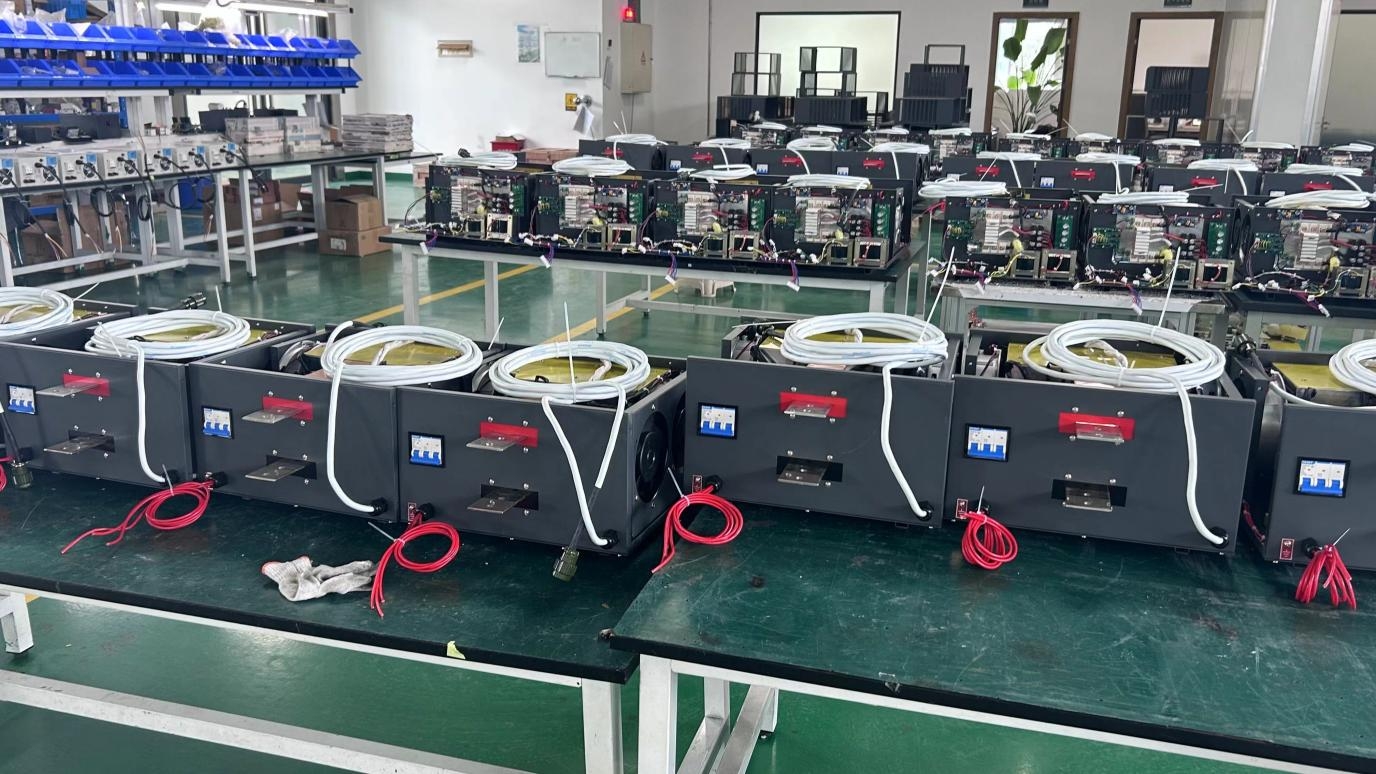In today’s fast-paced industrial and technological landscape, choosing the right power supply is crucial for ensuring efficiency, reliability, and cost-effectiveness in various applications. Two common types of power supplies dominate the market: high-frequency switching DC power supplies and traditional power supplies (such as linear or low-frequency switch-mode supplies). While both serve the purpose of converting AC to DC, their working principles, performance, and applications differ significantly. In this blog, we’ll break down the core differences in simple terms to help you understand which option best fits your needs.
1. Working Principle: How They Convert Power
The biggest difference lies in their conversion technology:
●Traditional Power Supplies (e.g., linear power supplies) use low-frequency transformers (50-60Hz) to step down the input voltage, followed by rectification and filtering. They rely on linear regulators to stabilize the output, which dissipates excess energy as heat. This process is straightforward but inefficient, especially for high-power applications.
●High-Frequency Switching DC Power Supplies operate at much higher frequencies (typically 20kHz to several MHz). They use high-frequency transformers and switching transistors (like MOSFETs or IGBTs) to rapidly switch the input voltage on and off, converting it to DC through rectification and filtering. This “switching” mechanism allows for precise control and minimal energy loss.
Keyword integration: high-frequency switching DC power supply, traditional power supply, conversion technology
2. Energy Efficiency: Save Power and Costs
●Traditional Power Supplies often have efficiency ratings between 50-70%. The linear regulation process wastes a significant amount of energy as heat, requiring larger cooling systems and increasing long-term electricity costs.
●High-Frequency Switching Power Supplies are far more efficient, with ratings ranging from 85-95% or higher. By minimizing heat dissipation and reducing energy waste, they help lower operational costs, especially in applications that run 24/7, such as industrial machinery, data centers, or renewable energy systems.
3. Size and Weight: Compactness for Modern Needs
●Traditional Power Supplies rely on bulky low-frequency transformers and heavy heat sinks, making them large and cumbersome. This limits their use in space-constrained environments like compact industrial equipment or mobile devices.
●High-Frequency Switching Power Supplies use smaller high-frequency transformers and advanced components, resulting in a much smaller footprint and lighter weight. Their compact design makes them ideal for applications where space is a premium, such as LED lighting, robotics, or portable electronics.
4. Voltage and Current Regulation: Precision Matters
●Traditional Power Supplies offer stable output but may struggle with rapid voltage fluctuations or precise adjustments, especially in dynamic loads. Their response time is slower, which can affect sensitive equipment.
●High-Frequency Switching Power Supplies excel in accurate voltage and current regulation thanks to their fast-switching control circuits. They can adapt to sudden load changes, maintain tight output tolerances (often within ±1%), and are ideal for applications requiring precision, such as electroplating, battery charging, or semiconductor manufacturing.
5. Thermal Management: Handling Heat Better
●Traditional Power Supplies generate a lot of heat due to low efficiency, requiring additional cooling solutions like fans or heat sinks. This not only adds to the size and cost but also introduces potential points of failure (e.g., fan malfunctions).
●High-Frequency Switching Power Supplies produce less heat, thanks to their efficient design. Many models use natural convection or silent fans for cooling, reducing noise and maintenance needs while improving reliability in harsh environments.
6. Cost: Short-Term vs. Long-Term
●Traditional Power Supplies may have a lower upfront cost, but their inefficiency and larger size often lead to higher operational and maintenance costs over time.
●High-Frequency Switching Power Supplies typically have a higher initial investment, but their energy savings, compact design, and longer lifespan (due to fewer moving parts) make them more cost-effective in the long run, especially for high-power or continuous-use applications.
When to Choose Which?
●Choose Traditional Power Supplies for:
◦ Low-power, non-critical applications where precision and efficiency are less important.
◦ Retrofit projects compatible with legacy systems.
●Choose High-Frequency Switching DC Power Supplies for:
◦ Industrial automation, renewable energy, EV charging, or any application requiring high efficiency, compact size, and precise control.
◦ Sensitive electronics that need stable, low-ripple DC output.
Conclusion: The Future of Power Supply Technology
While traditional power supplies still have their niche uses, high-frequency switching DC power supplies have become the preferred choice for modern industries due to their superior efficiency, compactness, and precision. As technology continues to demand smarter, more energy-efficient solutions, the advantages of high-frequency switching power supplies will only become more pronounced. Whether you’re designing a new industrial system or upgrading an existing setup, considering these key differences can help you make an informed decision that balances performance, cost, and sustainability.
Post time: Jun-05-2025





